The past year would have been a busy enough time for gaming anyway, with both independent and big name developers already beavering away on all sorts of exciting projects, but Valve’s Greenlight went and brought a host of new games to the table.
In that first year, Valve greenlit dozens of titles, from badger simulators to budgeting software, climaxing with an enormous, hundred game approval explosion at the end of August. Some of these games are still in development, others have seen release and several have been big, big hits. Greenlight has made some indie developers very happy people.
After launching Greenlight on 30 August 2012, Valve greenlit their first ten titles on 11 September. Back then the system worked a little differently and early users might remember a Greenlight that was flooded with all sorts of games, from the already established Project Zomboid to entries that were little more than a concept and a few pictures drawn out in MS Paint. Games could be both voted up and voted down and new submissions were arriving all the time. It would be a week before Valve introduced their $100 gateway fee.
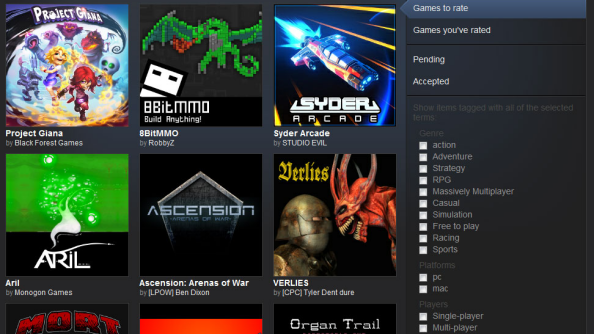
Striding past these hundreds of submissions and into those first greenlit titles was the manic puzzle-action game McPixel, which soon became the first Greenlight game to see release. McPixel was able to fight its way past the other games not only because of its popularity, but also because it was already complete and its creator had wagged his silver tongue.
“I got into the Greenlight beta,” explains Sos Sosowski. “I nagged Valve with a lengthy essay on how McPixel is super fitting for Greenlight and how I was looking forward to it, and it did the trick. The stats were not there when I was in, I didn’t know how many people voted, only the percentage, but I was pretty confident about it. There’s no failure when you’re an indie, so I just kept pushing it and believing.”
Sosowski says that, according to a third-party data-leeching website that had been active at the time, McPixel had risen to tenth place in the Greenlight rankings. The “stats” that he refers to are the data breakdown that Greenlight users are now able to see in much more detail.
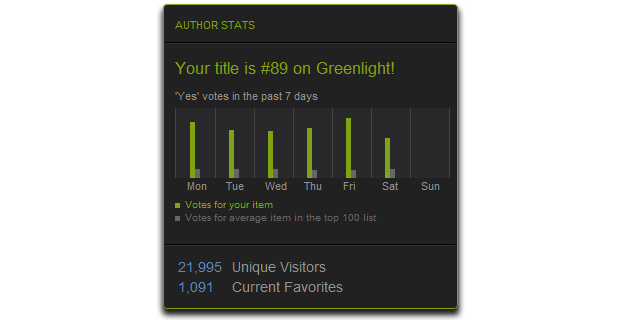
“That little box, that’s all you used to see,” says Josh Bishop, of Subterranean Games, whose War of the Overworld was both a Greenlight and Kickstarter success. “A few weeks after our title got greenlit, they then added real stats, though they still don’t give you your actual likelihood of being greenlit. That’s the problem.”
War for the Overworld only had to climb into Greenlight’s top twenty before it was greenlit on January 15 and, like McPixel, had a short route to acceptance. “We put [the game] up on December 19. This is after they announced that they were greenlighting titles on the January 15, so we just assumed that we weren’t going to be one of those titles. And then, when they put the post up and we were on it, Valve didn’t even tell us until the post had gone up! It was quite surprising. There must’ve been a big Dungeon Keeper fan out there.”
But, says Bishop, once Subterranean Games had been accepted into the fold, communication from Valve was much better. He describes them as “Very, very helpful,” and offering advice on things like price points and sales. “They were very understanding that we didn’t have much of an idea what we were doing. Once we had been greenlit, everything was so much nicer and we had a much better idea of what was going on.”
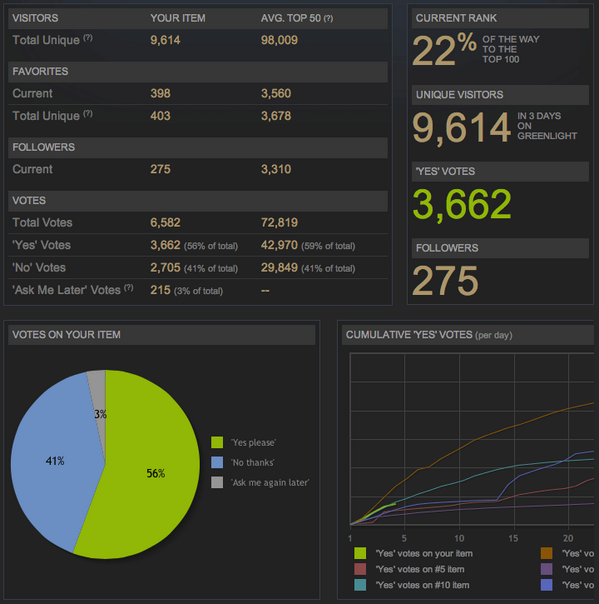
(This example breakdown from Papers, Please was tweeted by Lucas Pope.)
Now, Valve have a more comprehensive breakdown for developers to pour over. Their data includes a voting tally, a comparative progress graph and a ranking. All this, says Shaz of Broforce developer Free Lives, makes it much easier to monitor progress.
“The tools are great. You can see at any time how many yes/no/maybe votes you’ve received for the day, week, month and lifetime of your campaign,” he explains. “They also show you how you’re performing compared to the top hundred, top fifty et cetera. It was really interesting watching how strongly press influence how well you perform. One good review from a well known Youtuber would more than quadruple our views and votes if they mentioned our Greenlight campaign and the tail could stretch over a week.”
Such coverage won Broforce over 82,000 votes and propelled them to the number two spot in Greenlight’s rankings. Once again, after they were Greenlit, Valve got in touch and helped Free Lives take the next step. “Once we were Greenlit we received a congratulatory email and were directed to forms that we need to fill in to get the process rolling. Because we’re South African, there is some extra paperwork we need to get through for tax purposes.”
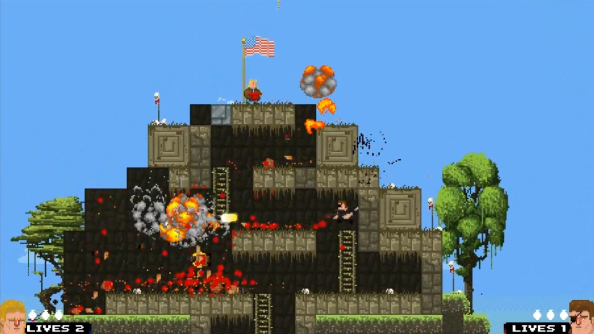
Frozen Synapse developers Mode 7 Games also appreciate the joy of stats. Although the critically-acclaimed Frozen Synapse is already an established game on Steam, the team decided to put their next project, Frozen Endzone, through Greenlight to gauge the level of fan interest.
“We wanted to find out whether people were excited about the game,” says Ian Hardingham. “If we did badly on Greenlight that probably meant there’s something wrong that we need to address. This was a great opportunity to get public reaction when we still had plenty of time to respond to it.” The Greenlight process also gave Mode 7 the opportunity to build a pre-release community who they could easily keep in touch with through development.
“The portal website is good and you get a high level of engagement from people. Loads of people left us comments and these in general were very useful,” Hardingham says. “What’s more useful than tens of thousands people telling you whether they’d buy your game or not?”
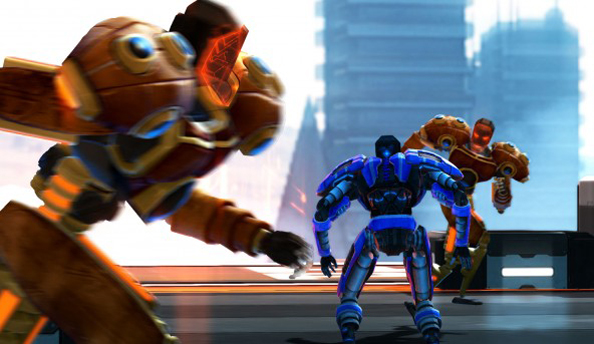
Mode 7’s considerable fan base no doubt contributed to the game’s greenlighting and within just a few weeks it was confirmed for Steam distribution.
Being greenlit is a tremendous success for any indie developer, as it guarantees a spot in front of an enormous global audience. Still, while many developers are delighted with the news and while Greenlight has clearly improved since its very wobbly launch, there are some who aren’t quite so happy with the service. Tomorrow, we’ll be looking at the numerous complaints and criticisms that were levelled at Steam Greenlight over its first year by some very disappointed, very skeptical developers.
